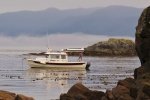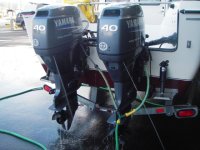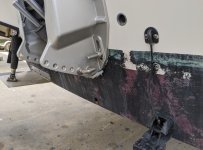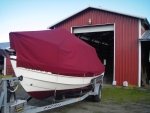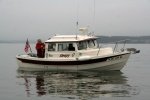curioustraveler
New member
Good morning C-Brats.
Well this lock-down has really delayed the launch of my new boat. She's sitting up at the yard, halfway through a fiberglass repair and the marina shut down. I'm thinking about bringing her home to knock out a few other projects while the marina's closed.
How important is painting the portion of the motor bracket that stays submerged? I've asked around and no one seems to think it's crucial. The one's I've spoken to, and that I've read about on here, say if I'm going to do it I need to follow a complicated process of removing the factory paint, prepping the surface, priming, and painting. Other's just tell me pressure washing it when I haul her at the end of the season is good enough. If this is the case, I'd rather just do that.
The only experience I have with this is a little runabout I used to own. I painted the bracket with Trilux 33 and it was absolutely covered in growth at the end of the season. Had to pressure wash anyways.
How many of you paint your bracket and is it really that important?
Well this lock-down has really delayed the launch of my new boat. She's sitting up at the yard, halfway through a fiberglass repair and the marina shut down. I'm thinking about bringing her home to knock out a few other projects while the marina's closed.
How important is painting the portion of the motor bracket that stays submerged? I've asked around and no one seems to think it's crucial. The one's I've spoken to, and that I've read about on here, say if I'm going to do it I need to follow a complicated process of removing the factory paint, prepping the surface, priming, and painting. Other's just tell me pressure washing it when I haul her at the end of the season is good enough. If this is the case, I'd rather just do that.
The only experience I have with this is a little runabout I used to own. I painted the bracket with Trilux 33 and it was absolutely covered in growth at the end of the season. Had to pressure wash anyways.
How many of you paint your bracket and is it really that important?

